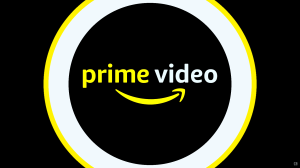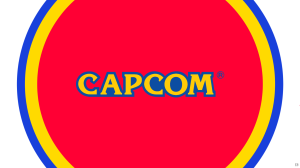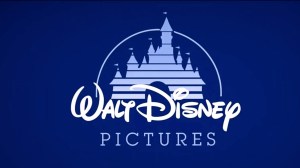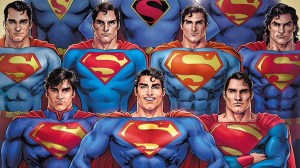
Veteran comic book creator Mark Millar, best known for his work on Marvel’s Civil War but also a veteran of DC’s Superman titles, recently opined that Marvel’s movies work better than DC’s becuase, basically, Marvel’s characters are more human.
Videos by ComicBook.com
While it was breathlessly reported by the entertainment press as yet another Marvel-versus-DC story, the argument is hardly new. Since the early days of Marvel’s shared universe, sources as varied as reviewers, scholars, and Stan Lee himself have noted that while DC’s Justice League is the modern day interpretation of the Greek Pantheon, Marvel’s heroes are by and large ordinary people thrust into extraordinary circumstances.
Of course, Marvel’s success een in its early days gave DC cause to take notice, and while it is true that many of DC’s biggest names and best-known heroes are defined less by their civilian lives and supporting casts than by their powers and abilities, it is hardly the hard-and-fast rule Millar made it out to be.
This is, to be fair, not an indictment of Millar; he was not meaning to be encyclopedic in his comments and presumably does not believe that the generalization applies universally. Taken as a critique of the existing Marvel and DC movies, it can be debated but it is not itself an absurd position to take.
That said, it does beg the question: if Warner Bros. were to buy into Millar’s take, what are some of DC’s more humanistic, Marvel-like heroes, whose movies could line up more losely with what the Kingsman and Kick-Ass writer says he wants to see?
We, of course, have some ideas.
*For the sake of argument, we are not going to consider anyone who has a movie or TV show currently in active development or on the air, or characters from imprints like Wildstorm and Milestone, where DC does not have free and clear control of the characters’ multimedia rights.
Manhunter

Marc Andreyko’s Manhunter is one of those series that always kind of felt more like a prestige TV show or an independent crime drama than a superhero comics.
Don’t get us wrong: it’s a wonderful superhero comic. Still, the high concept — a district attorney who is Mad As Hell And Not Going To Take This Anymore becomes a killer superhero who takes out the baddies who elude prosecution in her courtrooms — feels very much like a post-Alan Moore riff on superheroics.
Nevertheless, it avoided the cynicism that so many post-Moore takes have, embracing the DC Universe in all of its genius and madness. It also introduced one of the best, largest, and most developed supporting casts in recent comics history, complete with degrees-of-separation ties to more traditional superheroes (Kate Spencer, the comic’s title hero, is the cousin of Starman and her legal secretary is the boyfriend of Obsidian, an Infinity Inc. member and the son of the Golden Age Green Lantern).
Some of the comic’s earliest stories, in which Spencer’s family history is laid bare while a madman tromps through the DC Universe killing people with ties to the “Manhunter” name, could be a great feature film that both builds a rich, interconnected world and also stands on its own — not unlike what made Guardians of the Galaxy and Black Panther work.
It is Spencer herself — single mom, passionate about her job, uncompromising as a superhero — who would make this movie really work. There is an element of the Jessica Jones to her, except that unlike Brian Michael Bendis, with whom Andreyko co-wrote Torso early in both of their careers — Andreyko wrote Manhunter with a knowing wink and an affectionate nod to the history of superhero comics.
Starman
Like Marc Andreyko’s Manhunter, James Robinson’s Starman takes one of DC’s most storied franchises and turns it into a kind of auteur’s fantasy, blending various elements that are interesting to him with a deep appreciation for the history of the DC Universe and coming out the other side with something that is far, far greater than the sum of its parts.
In Starman, Jack Knight is forced to take over the role not only from his aging superhero father, but from his brother. His brother, keen to carry on the Starman legacy, is killed his very first night on the job, leaving Jack to avenge his brother’s death and protect the city…albeit without much enthusiasm.
What he does have enthusiasm for is his litany of personal obsessions, most notably his fascination with “junk culture.”
Predating both Manhunter and Winter Soldier, Starman featured a story in which a villain mercilessly hunted those with ties to the Starman legacy — although where such a story was the introduction of the Winter Soldier and one of the best Manhunter tales, it actually was less a highlight in Starman, a book which excelled more in the smaller, personal stories and gave DC some of their best villains and villainous reinventions in years.
Blue Beetle

There are two different Blue Beetles who could be used to make a “Marvel style” movie, although given the nature of Hollywood, there is a decent chance they would simply mash the two up rather than picking between them.
Ted Kord, the Blue Beetle reinvented by Spider-Man co-creator Steve Ditko, is a genius inventor who creates an army of Beetle-themed toys to help him fight crime. In the vein of Batman or Iron Man, Kord is differentiated from those two in part because he does not allow his wealth and genius to stand between him and the rest of the world, but rather builds fairly functional relationships outside of the suit.
This also means that, in the context of a movie, he will have friends and/or a love interest who could be targeted by the villains.
Kord is best known for his stint on the Justice League International — that period where the Justice League became a kind of workplace action-comedy for B-list superheroes — and for his longtime friendship with Booster Gold, another member of that League.
The other option would be Jaime Reyes, a Latinx youth who gets his hands on a magical (?) scarab which grants him powers as the Blue Beetle. Sprouting a suit of armor, he learns that the scarab is not actually magical but alien in nature, and that it has conscripted him into a war between the Scarab’s creators and the worlds on which their Blue Beetles live.
Basically, Jaime is a blend of Spider-Man — complete with the teen drama, school troubles, and all that — and Silver Surfer. As the intended harbinger of The Reach’s attack on Earth, Jaime instead manages to become the first line of defense against them — all while he has the chattering, alien voice of his suit in the back of his head trying to do things differently.
Swamp Thing

Swamp Thing is a character who has already had several turns at bat in Hollywood, with mixed results. He is also part of the Justice League Dark movie that is rumored to be maybe-kinda-sorta in development so this is slightly a cheat — but we’re going to allow it — partly because at this point it feels like Justice League Dark is in that Gambit limbo where it might just never happen.
While New Line Cinema is currently developing Shazam! (you can see what appears to be a first glimpse at the title hero here), which is kind of the ultimate in superhero wish-fulfillment fantasy, Swamp Thing is the opposite.
Like The Thing from Marvel’s Fantastic Four, Alec Holland is terrorized by his life as Swamp Thing. Yes, he has nearly immeasurable power, but those abilities cannot restore his humanity or give him back a normal life. Meanwhile, he has a positively Shakespearean on-again/off-again thing with the daughter of his archenemy.
In part because of Shazam! and in part because of their long history with horror franchises, Swamp Thing could be an ideal candidate for a mid-budget DC specialty franchise at Warner Bros.’ imprint New Line.
Adam Strange
A sci-fi hero in the vein of Buck Rogers, Adam Strange is interesting because right now, he is about to appear on Krypton — but that version (no costume, no Rann, no wife) is basically the Smallville version of Adam Strange.
The “final” version of Adam, the one who could make a fun, swashbuckling space adventure movie, is not represented yet and may not be in the life of Krypton, since we assume his development will not be the primary focus of a show where Superman’s grandfather is the main character.
Still, blending his comic book roots with some of the personality on display in Krypton, one can imagine Adam Strange being DC’s answer to Star-Lord.
Captain Atom

In Grant Morrison’s Supergods, he referred to many of the Silver Age heroes — primarily those popularized at Marvel — as the “accidental heroes.”
Captain Atom is one of DC’s most notable non-accidental accidental heroes. Like Captain America, he is a serviceman who volunteered for a kind of enhanced soldier project, only to find that his life would be forever altered by it.
Unlike Captain America, Nathaniel Adam was not a desperate kid who just wanted to do the right thing. He was essentially a wrongfully-convicted prisoner, who was given the choice of the death penalty or the near-certain-death of the project which would ultimately make him incredibly powerful.
This is the kind of thing that could also benefit from a contemporary update and maybe some light wading into sociopolitical territory. As Black Lightning appears to be examining a Tuskegee-style experiment that yielded metahumans, that is something that could easily be explored with Captain Atom.
Even if you don’t make him a black man (although certainly you could and it wouldn’t hurt anything), you could comment on the prison-industrial complex — a concept that is getting a lot more traction these days given the political clout of the private prisons industry with the Trump Administration.
The Creeper

This is another one that could draw some inspiration from Black Panther and manage a kind of slickly general, inoffensive commentary on politics and the media that could prove a valuable marketing hook.
Jack Ryder is a TV journalist who over the years has drifted rightward to the point where he was essentially DC’s version fo Bill O’Reilly at one point. He is also the civilian identity of The Creeper, a trippy, technicolor antihero whose brutal methods, creepy laugh, and bizarre appearance often put him at odds with other heroes.
The Creeper has one of the most bizarre and interesting designs of any DC hero, and certainly an argument could be made that he has some of the same aesthetic appeal as The Joker.
He also has Spider-Man co-creator Steve Ditko to thank for his existence, which both explains why he is typically depicted as conservative to the point of libertarianism and also explains his striking, appealing visual identity.
Steel
There is something really pure and inspirational about Steel.
John Henry Irons, a former defense contractor who felt guilty about his role in ending lives and decided to become a construction worker instead, was so profoundly affected when Superman saved his life once that he vowed to make it up to the Man of Steel someday.
Eventually he did — by working to fill the hole left behind by Superman’s death at the hands of Doomsday as the armored hero who would come to be known as Steel.
Irons is tortured by his past and haunted by his former business partners, but ultimately he is, like Superman, a character who is good because being good is the right thing to do. He puts his life on the line with no powers and only his own wits and skills, like Batman, and he manages to use those skills to make not only his armor, but plenty of other inventions to make his (and the other superheroes’) lives easier, like Iron Man.
Also, if you believe his 1997 movie, he can’t make a free throw to save his life.
Metamorpho

Another tortured hero in the vein of The Thing, Metamorpho is arguably even easier for most people to relate to than Swamp Thing.
Rather than a scientist, Rex Mason was an aspiring movie star, and so the idea of losing his humanity and his ability to go back to his normal life arguably hit him even harder than someone like Ben Grimm or Alec Holland, who could theoretically do their old job in secret.
No, Mason’s exile from Hollywood was immediate and humiliating, making explicit the societal rejection that was always implicit to characters like him.
With a presence in tomorrow’s The Terrifics and a sinister role implied in the early issues of Doomsday Clock, it seems Metamorpho, who has been largely absent since the launch of DC’s The New 52 publishing initiative in 2011, is poised to make a comeback.
Maybe it’s time for him to make a transition to other media, too…?
Challengers of the Unknown

While Hollywood cannot seem to get the Fantastic Four right, this kind of Brand-X version actually has all the necessary components for success, without quite so much of the baggage that can keep the FF grounded.
The Challengers of the Unknown are, like the FF, super-scientists who travel around in custom tech exploring the universe and using their special abilities to fight monsters and help others.
Unlike the FF, they are not generally well-known and they do not have a Doctor Doom.
That is to say, they lack a recognizable villain, which is not particularly a stumbling block (ask the Guardians of the Galaxy) and can be, as in the case of the Fantastic Four, a blessing in disguise. The FF might have had a bit more of a chance to do something different if they had not been blessed with one of comics’ greatest villains, Doctor Doom, which then made screenwriters feel like they needed to use him. Like, every time.
The Challengers, like the FF, are ordinary people thrust into fantastical situations, and they have the same fundamental appeal: their familial interactions feel less like gods descending from Olympus and more like a dysfunctional family or workplace. They are human, many of their concerns are shallow and their conflicts petty, and they only work if they all count on one another to bring out the best and most interesting aspects of one another.









